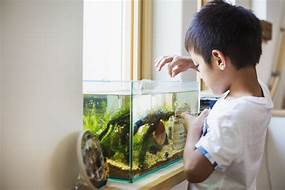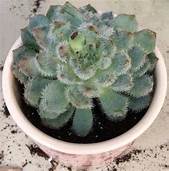How to Take Care of Pet Fish
Having pet fish can be a rewarding and educational experience. However, keeping fish healthy and happy requires a commitment to proper care and maintenance. Here's a comprehensive guide on how to take care of pet fish:

Choosing the Right Fish and Aquarium
1. Consider the Type of Fish: Different fish species have different needs and temperaments. Choose fish that are compatible with each other and suitable for your experience level.
2. Select a Suitable Aquarium: The size and type of aquarium depend on the number and size of fish you plan to keep. Make sure it has a filtration system and a heater to maintain a stable environment.
3. Set Up the Aquarium: Arrange the substrate, decorations, and plants in a way that provides hiding spots and swimming space for the fish.
Water Quality and Maintenance
1. Maintain Water Quality: Regularly test the water parameters, including pH, ammonia, nitrite, and nitrate levels, to ensure they are within acceptable ranges.
2. Perform Water Changes: Change a portion of the aquarium water (typically 10-25%) every week to remove waste and replenish minerals.
3. Clean the Aquarium: Clean the aquarium regularly to remove debris and algae. Use a gravel vacuum to clean the substrate and a soft brush to clean the decorations and plants.
Feeding and Nutrition
1. Provide a Balanced Diet: Feed your fish a variety of high-quality fish food, including flakes, pellets, and live or frozen food.
2. Avoid Overfeeding: Overfeeding can lead to health problems. Feed your fish only as much as they can consume in a few minutes.
3. Feed on a Regular Schedule: Establish a regular feeding schedule to help your fish maintain a healthy appetite and digestive system.
Health and Disease Prevention
1. Quarantine New Fish: Always quarantine new fish for at least two weeks before introducing them to the main aquarium. This helps prevent the spread of diseases.
2. Monitor Fish Behavior: Observe your fish's behavior and appearance for any signs of illness, such as lethargy, loss of appetite, or abnormal swimming patterns.
3. Isolate Sick Fish: If you suspect a fish is sick, isolate it immediately to prevent the spread of disease. Consult a veterinarian for proper diagnosis and treatment.
Maintenance and Care
1. Trim Plants and Decorations: Regularly trim overgrown plants and decorations to maintain a clean and healthy environment for the fish and avoid overcrowding.
2. Check Equipment Regularly: Ensure that the filter, heater, and other equipment are functioning properly and replace them as needed.
3. Handle Fish Carefully: When handling fish, use a soft net and avoid touching them directly with your hands to minimize stress and potential injury.
Declaration: All article resources on this website, unless otherwise specified or labeled, are collected from online resources. If the content on this website infringes on the legitimate rights and interests of the original author, you can contact this website to delete it.





